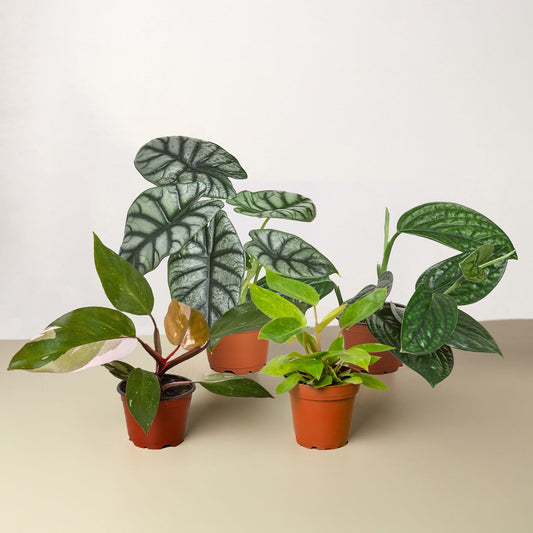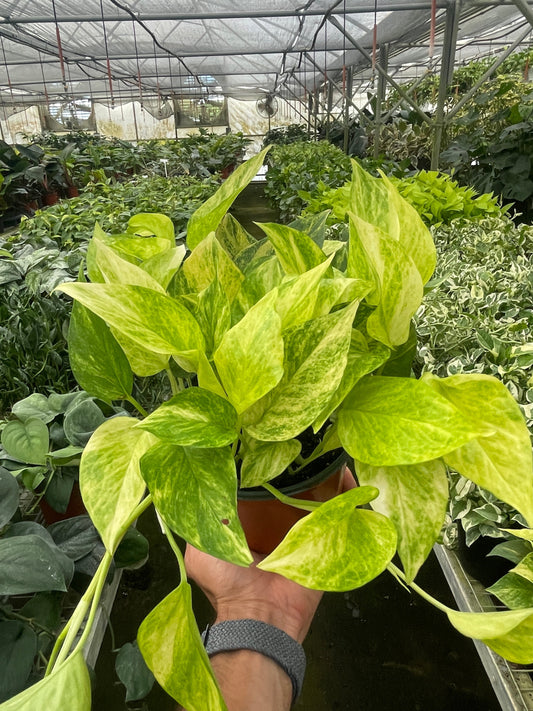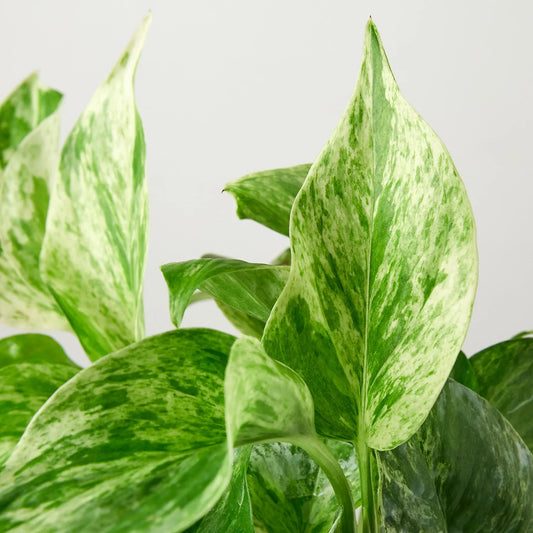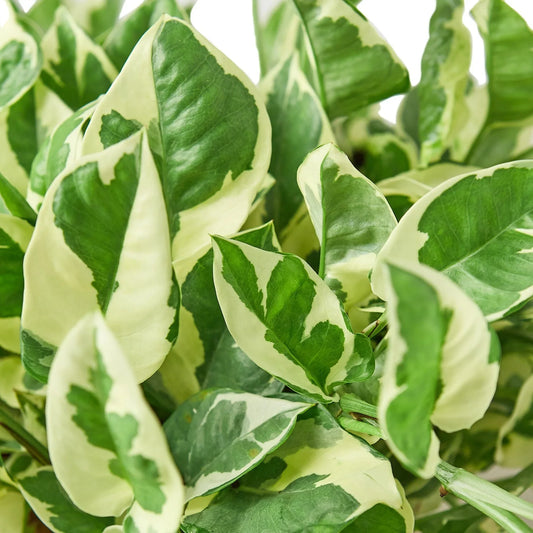Types of Sword Fern Varieties: The Complete Guide
Cafe Planta Team
When it comes to adding a touch of green elegance to your home, sword ferns are a top choice. Known for their graceful, arching leaves, these ferns bring a vibrant sense of nature indoors. But did you know there are many different varieties of sword ferns? Each one has its own unique characteristics and care requirements.
In this article, we'll look at the most popular sword fern varieties. Whether you're a seasoned plant lover or a beginner, you'll find tips and tricks for choosing the right fern and keeping it healthy and thriving. Let's get started on exploring these fascinating plants!
Boston Fern (Nephrolepis exaltata)
First up, the Boston Fern is probably the most well-known sword fern. Its lush, feathery foliage makes it a favorite among plant parents. This fern thrives in humid environments and loves indirect light, making it perfect for bathrooms or kitchens where humidity is naturally higher.
If you're considering adding a Boston Fern to your collection, here are some care tips:
- Light: Prefers bright, indirect light. Avoid direct sunlight as it can scorch the leaves.
- Water: Keep the soil consistently moist but not soggy. Water more frequently during warmer months.
- Humidity: High humidity is essential. Consider misting the leaves or placing a humidifier nearby.
- Temperature: Ideal range is between 60-75°F (15-24°C).
Boston Ferns are sensitive to dry air and can develop brown leaf tips if the humidity is too low. To prevent this, you might want to group them with other plants or use a pebble tray filled with water to boost the humidity around them.
Kentucky Blue Sword Fern (Polystichum munitum)
This variety, native to North America, is commonly found in forests along the Pacific Coast. It's known for its bluish-green leaves and robust growth, making it an excellent choice for outdoor gardens in suitable climates. However, it can also be grown indoors if given enough space and light.
Here's how to care for a Kentucky Blue Sword Fern:
- Light: Prefers partial to full shade if outdoors. Indoors, bright indirect light works best.
- Water: Likes consistently moist soil. Be wary of overwatering as it can lead to root rot.
- Humidity: Moderate to high humidity is preferred. Misting can help in drier environments.
- Temperature: Tolerant of cooler temperatures, ideally between 50-65°F (10-18°C).
If you live in a cooler climate, the Kentucky Blue Sword Fern can be a stunning addition to your outdoor garden. Its hardy nature means it's less demanding in terms of care, making it a fantastic choice for those who might not have a green thumb yet.
Macho Fern (Nephrolepis biserrata)
Don't let the name intimidate you! The Macho Fern is a bold and beautiful plant with large, arching fronds that can make a real statement in your home. This fern is larger than the Boston Fern and is perfect for spacious indoor areas or sheltered patios.
Care tips for your Macho Fern include:
- Light: Needs bright, indirect light. It can tolerate some direct sunlight, especially in the morning.
- Water: Keep the soil moist, but ensure proper drainage to avoid waterlogging.
- Humidity: High humidity is beneficial. You can mist the plant or place it near other humidity-loving plants.
- Temperature: Prefers temperatures between 60-80°F (16-27°C).
Due to its size, the Macho Fern can become quite heavy. It's a good idea to plant it in a sturdy pot. Placing this fern near a window where it can get morning sun will help it thrive.
Aspenium Fern (Asplenium nidus)
Also known as the Bird's Nest Fern, the Aspenium Fern stands out with its unique rosette of wide, glossy leaves. Unlike the feathery foliage of other ferns, its leaves are more structured, giving it a distinct look that works well in modern interiors.
To keep your Aspenium Fern happy, consider these tips:
- Light: Prefers low to medium light. Too much direct sun can damage its leaves.
- Water: Water when the top inch of soil feels dry. Avoid watering directly into the center of the plant.
- Humidity: Thrives in high humidity. Bathrooms can be ideal locations.
- Temperature: Best kept in temperatures between 60-75°F (15-24°C).
The Aspenium Fern is less fuss about humidity compared to other ferns, but it still appreciates a bit of extra moisture in the air. Its broad leaves can collect dust, so gently wipe them with a damp cloth to keep them looking their best.
Kimberly Queen Fern (Nephrolepis obliterata)
Known for its upright, bushy growth, the Kimberly Queen Fern is a great option for those looking for a more structured appearance. It's less demanding than other ferns and can handle a bit more sun, which makes it versatile for different spots in the home.
Here’s how you can care for a Kimberly Queen Fern:
- Light: Can tolerate direct sunlight better than most ferns, but prefers bright, indirect light.
- Water: Keep the soil evenly moist. Reduce watering during the colder months.
- Humidity: Moderate humidity is sufficient, but misting can help in dry periods.
- Temperature: Enjoys temperatures between 60-75°F (15-24°C).
This fern is less prone to shedding leaves, which means less cleanup for you. It’s an excellent choice for a patio or balcony, as it can withstand some wind and sun without getting frazzled.
Japanese Tassel Fern (Polystichum polyblepharum)
The Japanese Tassel Fern is another outdoor variety that can adapt well to indoor conditions. It’s known for its glossy, dark green leaves and a unique growth habit that resembles a tassel. This fern is a great way to add a touch of the outdoors to your indoor space.
Key care instructions include:
- Light: Prefers shady spots, both indoors and outdoors.
- Water: Keep the soil consistently moist, but not waterlogged.
- Humidity: Does well in moderate to high humidity.
- Temperature: Thrives in cooler temperatures, ideally between 50-65°F (10-18°C).
If you're looking for a fern that can handle a bit of cooler air, the Japanese Tassel Fern is a smart pick. It brings a classic touch to any setting, be it a shaded garden corner or a dimly lit hallway.
Silver Lace Fern (Pteris ensiformis)
This variety stands out with its beautifully variegated leaves. The Silver Lace Fern has delicate, silver-white patterns that can bring a bit of brightness to any plant collection. It's a more compact fern, making it perfect for small spaces or as part of a mixed plant display.
Care tips for the Silver Lace Fern are as follows:
- Light: Prefers bright, indirect light. Avoid direct sunlight to prevent leaf burn.
- Water: Water when the top inch of soil is dry. Avoid letting the soil dry out completely.
- Humidity: Prefers high humidity levels. Consider using a pebble tray or humidifier.
- Temperature: Best in temperatures between 60-75°F (15-24°C).
Because of its unique leaf pattern, the Silver Lace Fern can be a conversation starter. It's a bit more sensitive to changes in humidity, so keeping it away from drafts and heating vents can help it stay healthy.
Holly Fern (Cyrtomium falcatum)
Last but not least, the Holly Fern is a hardy variety that can tolerate lower light and cooler temperatures. Its leaves resemble those of a holly plant, hence the name. This fern is ideal for those who want a low-maintenance plant that still offers plenty of greenery.
Here's how to care for a Holly Fern:
- Light: Adapts well to low light, but prefers medium, indirect light.
- Water: Keep the soil slightly moist. Water less in the winter.
- Humidity: Can tolerate lower humidity, but benefits from occasional misting.
- Temperature: Does well in temperatures between 50-75°F (10-24°C).
The Holly Fern is forgiving and resilient, making it a great choice for beginners or those with less-than-ideal growing conditions. Its tough nature means it can handle a bit of neglect, perfect for busy plant parents.
Final Thoughts
Sword ferns are incredibly diverse, with each variety offering unique beauty and charm. From the classic Boston Fern to the striking Silver Lace Fern, there’s a sword fern for every home and skill level. By understanding their specific care needs, you can enjoy these lush plants year-round.
At Cafe Planta, we’re passionate about helping you succeed in your plant journey. Whether you're looking to add a new fern to your collection or need advice on keeping your plants healthy, we're here to help. Reach out to us via email or connect with us on Instagram. We believe in the power of plants to connect and inspire, and we're excited to share this journey with you!



















